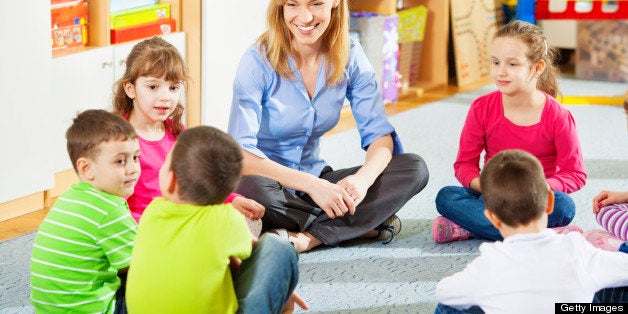
Ask your 5-year-old what she wants to be when she grows up and she might say an astronaut or teacher, chef or engineer. Maybe she wants to run a flower shop.
But what if she said: I don't know! What I want to be doesn't exist yet?
She'd be right. A Department of Labor statistic indicates that 65% of school-age children today will grow up to have jobs that do not yet exist. That idea can be unsettling for a parent -- or it can be exciting, if you know you can help get her ready for a future that we can only begin to imagine.
As part of that preparation, parents are starting to hear about a new education framework called 21st Century Learning, which intertwines disciplines to get kids to approach problems and concepts in different ways.
The basics -- foundational literacies like language skills, mathematics, science, social studies, all of those things that kids have learned in school for eons -- remain absolutely vital. The 21st Century Learning framework layers on top of these some new ways of thinking, new ways of solving problems, and new ways of working together.
The aim: To prepare our children to be able to solve new types of problems in a quickly-evolving, very globally-connected world.
Here's a quick primer for parents:
THE FOUR Cs AND MORE
Some leaders in the field have crystallized thinking around 21st Century learning into the Four Cs -- critical thinking, collaboration, communication, and creativity. The framework also includes important character qualities -- curiosity, initiative, persistence, grit, leadership, adaptability and social and cultural awareness.
From a teacher's perspective all of those things form a framework for both what you teach and how you teach. From a child's perspective, it's both what they need to know and how they solve problems.
STARTING EARLY
The more we expose kids to working together in groups to evaluate and solve new types of problems, the better they're going to be at it. It's like learning to play the piano: The more you get to practice playing the piano, the better your odds of playing confidently.
The good news is that this approach of reinforcing the practice of collaboration tends to manifest itself in really fun projects. And it is a very natural way for children to learn. Kids love learning with their hands and with their peers in a project-type environment. It may sound like a very formal term, but 21st Century Learning blends well with kids' innate tendencies for collaborative play and learning.
WHAT'S NEW ABOUT THIS?
Working collaboratively isn't a new idea. What's fresh is the idea of using collaboration and other 21st Century Learning skills in the context of classic, foundational literacies. Instead of teaching science as a discrete subject that you teach for 25 minutes every Tuesday, for instance, you'd fold in aspects of math and literacy and get kids working collaboratively in groups to create art that describes the science concepts they were just learning about.
Think about it this way: It's less about sitting at a desk and answering worksheets and more about discussion and problem solving- why do you think that, let's discuss how you solve that, what do your peers think, how did they approach and evaluate various solutions?
ARE MY KIDS GOING TO GET TESTED ON THIS?
Most of today's skills assessment testing remains focused on knowledge in core content areas - math, science, language arts and the like. But leading 21st Century Learning groups such as Washington D.C.-based P21 advocate for a more modern testing approach that can gauge how well students apply that knowledge in different situations. In high schools, 15-year-olds are now encountering questions related to problem-solving and other 21st Century Learning skills in PISA tests (Programme for International Student Assessment) that are administered internationally.
One great way for parents to become familiar with the 21st Century Learning concept is to try it out at home in everyday situations. Here are four ways you can make the Four C's come to life with your own family and help your own child's development:
Critical thinking: Kids ask a lot of 'why' questions -- and so should you! It's a great way to foster curiosity and critical thinking. If you are working on a puzzle together, ask your child why she decided to put a puzzle piece in a certain place, how she knew it went there and not somewhere else. What was she looking at on that piece of the puzzle that made her decide to put it where she put it?
Communication: Help your children find the right words and more to express themselves -- whether it's through drawing, through song or talking.
Collaboration: Playdates are a perfect setting for fostering collaboration from time to time. Something as simple as gathering around the table to make cookies is a great way to encourage working together. Kids will need to think about how to divide the task or how to work things out when two of them want to do the same thing. As a parent, you can get involved and help them develop language around collaboration, turn-taking and negotiation.
Creativity: Get creative about giving your kids access to the things that they need to be creative. For some, creativity might mean coloring, or putting on a puppet show. For others, it is the way they dress themselves or arrange their bedroom.
THE BOTTOM LINE
This new way of approaching learning is about looking at your child's development in a brand new way. It's not "new" math versus "old" math - it's the art and science and language and social interaction of math that supports the critical thinking skills vital to the 21st century learner.